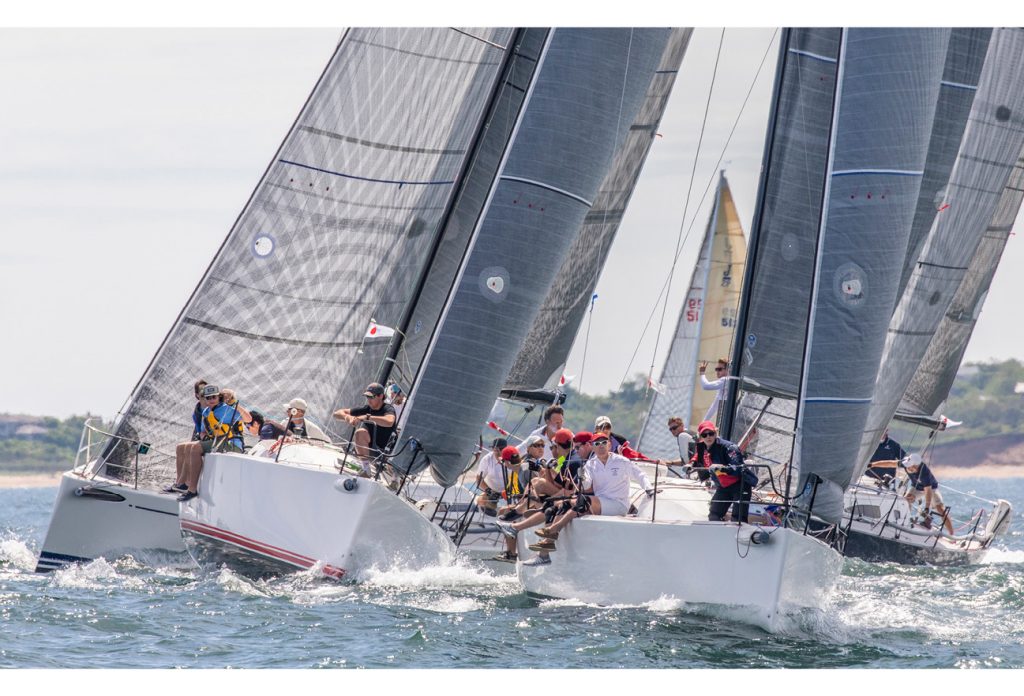It’s not usually a good idea to overstand the windward or leeward marks. Whenever you sail past the layline you are simply giving away free boatlengths to every other boat in the fleet. There are some times, however, when intentionally overstanding the mark can be a smart, or at least a smartly conservative, move. Here are a few examples:
Current flowing with wind – One of the hardest times to call a good layline is when there’s current, especially if that current is pushing you to leeward of the windward mark. When this happens, many boats make their layline call too early – the result is a big traffic jam at the mark with boats pinching, hitting the mark and generally losing places in the race.
Whenever you have an adverse current, expect a mess at the mark and over-estimate how far you have to go to lay the mark. Especially in light air, you can gain a ton by over- standing so that you can eliminate pinching and avoid other boats that are struggling against the current. The last thing you want is to get pinned by a starboard tacker on your windward hip when you aren’t comfortably making the mark.
If in doubt, go a little farther. You will lose some distance or boats if you go too far, but you’ll protect yourself against really big losses.

There are certain advantages in getting to the layline early. This gives you a chance to build speed for the rounding, reserves you a spot in the starboard-tack lineup and gives you time to set up for your spinnaker set. © Stephen R Cloutier
More wind above the layline – Once in a while, for some reason, there is noticeably better pressure beyond the layline to the windward mark. When this happens, you generally have two choices: Tack on the layline and sail straight to the mark in less pressure, or overstand the mark and sail in more wind.
Better to over-stand than under-stand – As a rule of thumb, it’s usually preferable to overstand the mark slightly than to understand it slightly. A perfect layline is best, but when you’re not confident about layline location go far enough to be sure you make the mark.
This ‘insurance’ is a worthwhile investment when there’s a chance that you will not make the mark (or you will make it, but slowly). If you think you might have to do two more tacks, sail into a header before the mark, or get tacked on by another boat, consider calling a “fat” layline.
It’s a starboard rounding – Match racers (who round every mark to starboard) know that when they approach the windward mark on port tack (while the other boat is on starboard) they better overstand. The problem with making a perfect layline call is that if they need to duck the other boat, they won’t be fetching the mark anymore.
The same applies in a fleet race. Try not to approach the mark on port tack, but if you find yourself in that position, overstand enough so a) starboard tackers will likely tack inside you to round the mark; and b) if you have to duck one or more boats you will still make the mark.
Overstanding the mark (on purpose) does work sometimes, but it should be an occasional exception, not a general rule. Anyone in a sailboat can go past the layline and overstand; don’t let this replace a thoughtful approach that gets you to the mark faster. ■
This article originally appeared in David Dellenbaugh’s Speed & Smarts, The newsletter of how-to tips for racing sailors. If you want to sail faster and smarter, log onto SpeedandSmarts.com.
A resident of Easton, CT, Dellenbaugh was tactician and starting helmsman for America3’s successful defense of the America’s Cup in 1992. He’s a Lightning World Champion, two-time Congressional Cup winner, seven-time Thistle National Champion, two-time winner of the Canada’s Cup, three-time Prince of Wales U.S. Match Racing Champion, and a winner of the U.S. Team Racing Championships for the Hinman Trophy.



